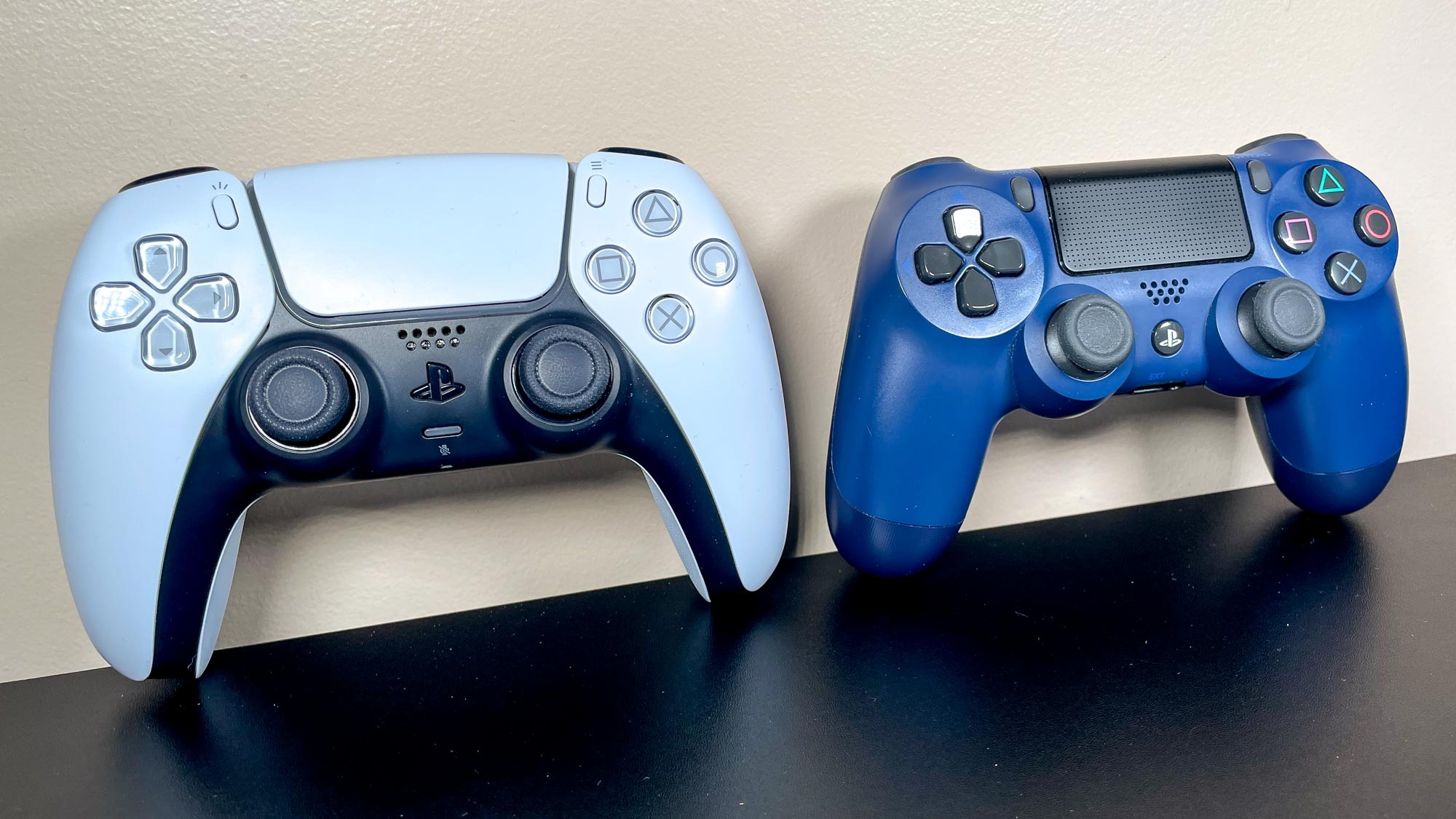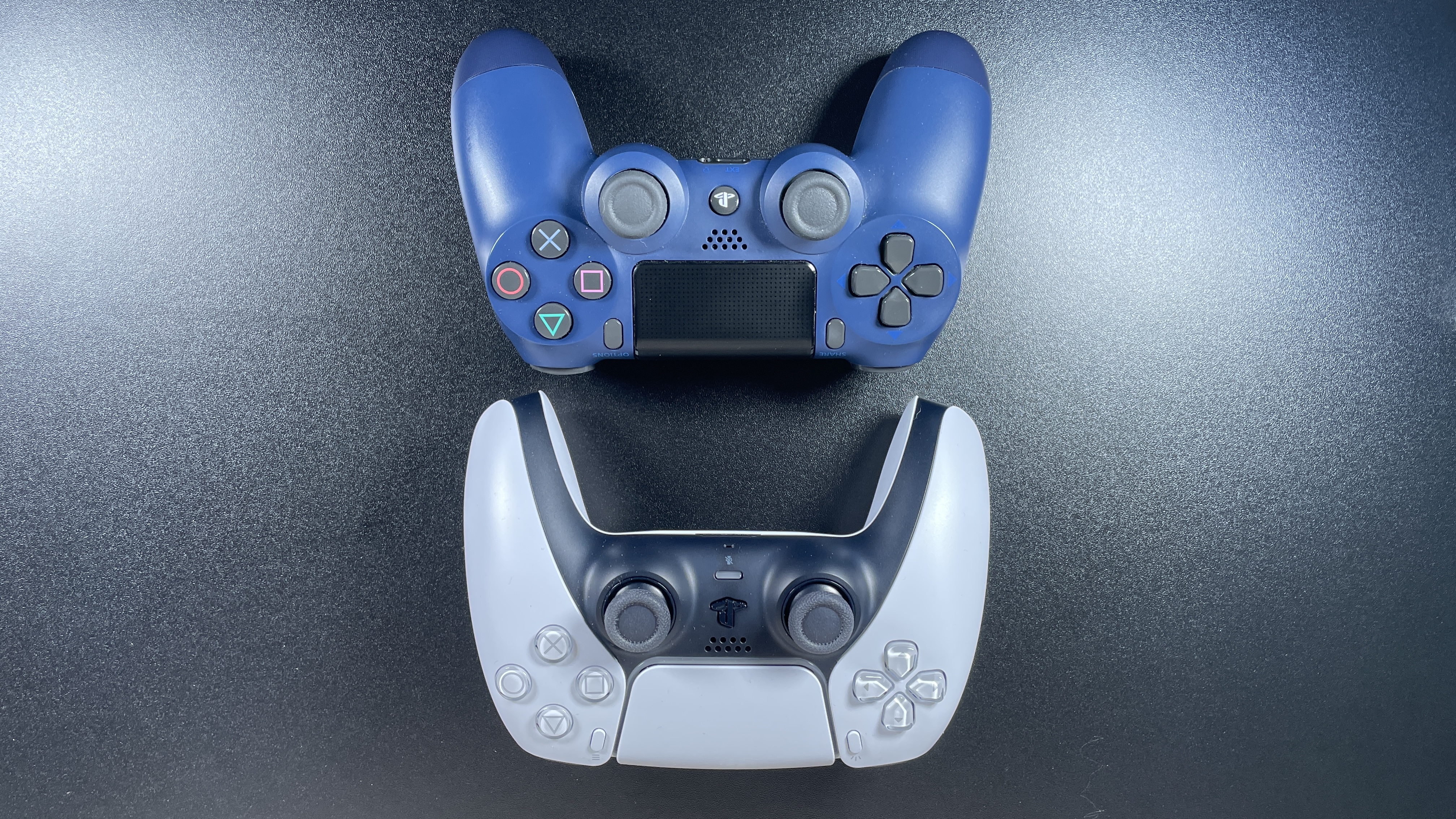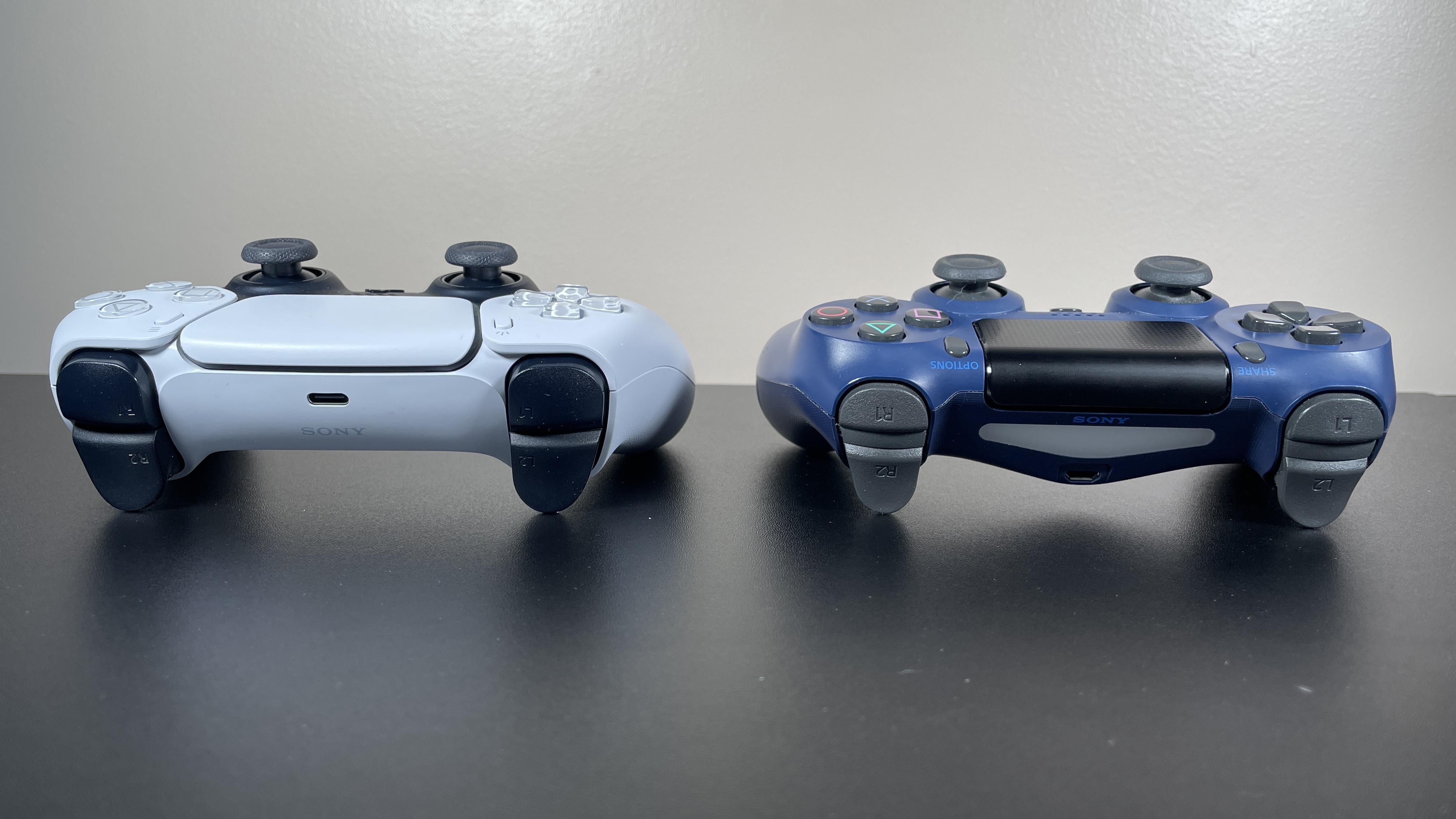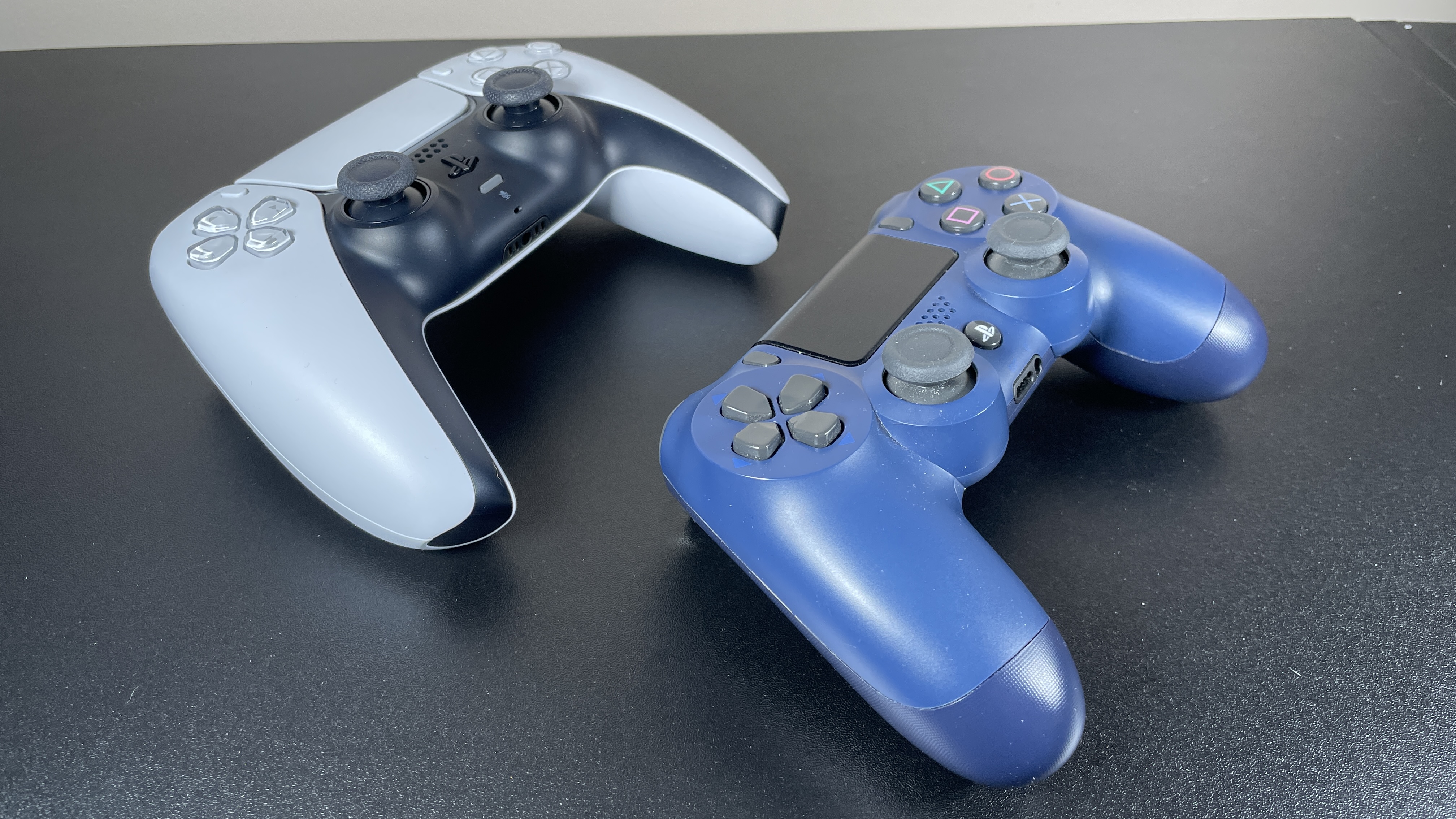PS5 DualSense vs DualShock 4: What’s different?
Here's how Sony's two controllers stack up

Update: Sony announces the DualSense Edge at gamescom 2022, its answer to Microsoft's Elite controller.
The PS5 is finally upon us, and it’s bringing with it one of the most radical redesigns to the PlayStation controller we’ve ever seen. The new DualSense controller is designed to deliver maximum immersion, thanks to advanced haptic feedback, adaptive triggers and built-in sounds that allow you to feel and hear your favorite games like never before.
But it has some big shoes to fill thanks to the PS4’s DualShock 4, which is largely considered one of the best controllers ever made, and will still work with PS5 for select games. So if you’re curious what’s new when it comes to the DualSense vs. DualShock 4 and how you’ll be able to use the two controllers on Sony’s new console, read on for our full breakdown.
- PS5 Digital Edition vs. Xbox Series S: Which affordable console is for you?
- How to connect a PS5 DualSense controller to your iPhone
- PS5 load times tested — now this is an upgrade
PS5 DualSense vs DualShock 4 specs compared
| Header Cell - Column 0 | PS5 DualSense | DualShock 4 |
|---|---|---|
| Price | $69 | $64 |
| Size | 6.3 x 2.6 x 4.2 inches | 6.4 x 2.0 x 3.9 inches |
| Weight | 9.9 ounces | 7.4 ounces |
| Key features | Haptic feedback, adaptive triggers, built-in microphone, motion controls, touchpad | Motion controls, built-in speaker, touchpad |
| Connectivity | USB-C | microUSB |
| Compatibility | PS5, PC (tentative), Android (tentative) | PS5 (PS4 games only), PS4, PS3, PC, Mac, Android, iOS |
PS5 DualSense vs DualShock 4: Price
Next-gen functionality doesn’t come cheap. The DualSense Wireless Controller sells for $69.99, which is a bit more expensive than the $64.99 MSRP of the DualShock 4. However, we often see the latter controller go on sale, so keep an eye out for Black Friday PS5 deals.
Of course, both of these controllers come with their respective consoles, so PS5 owners will get one DualSense out of the box.
PS5 DualSense vs DualShock: Design and feel

The PS5 console itself isn’t the only new piece of Sony hardware that goes big. The DualSense is significantly beefier than the DualShock 4, with a more hefty grip that brings the Xbox Wireless Controller to mind. The DualSense doesn’t feel much heavier than the DualShock 4 at 9.9 ounces versus 7.4 ounces, but you’ll immediately notice the difference in size.
Having used the DualSense for a few days now, I’m still not quite sure which controller I prefer in terms of feel. There’s a satisfying heft to the PS5 gamepad, but I’m curious to see if it leads to any hand cramps when I’m hours into an intense Mortal Kombat or Call of Duty session. The DualShock 4 still feels very ergonomic, and downright compact when compared to its new sibling.
Sign up to get the BEST of Tom's Guide direct to your inbox.
Get instant access to breaking news, the hottest reviews, great deals and helpful tips.
But these controllers don’t just feel different; they also differ wildly in terms of physical appearance. Whereas most DualShock 4 variants comprise a single color, the DualSense has an eye-popping two-tone design with white translucent buttons and a black interior area.
The button layout is largely the same, but the DualSense has a much bigger touchpad area. And as a neat touch, the DualSense has subtle rear grips that are actually composed of a bunch of tiny symbols that correspond to the four PlayStation face buttons (Circle, cross, square and triangle).
The DualSense’s light bar now emanates out of the touchpad in the front, making it far more visible than the DualShock 4’s top-facing light. It’s also worth noting that the DualSense has made the jump to USB-C for charging, whereas the DualShock 4 relies on the old micro-USB standard.
PS5 DualSense vs DualShock 4: Features

The DualSense’s big selling points are its advanced haptics and adaptive triggers, which work together to create a sense of feedback that’s more immersive than any other controller. For example, while playing Astro’s Playroom, you’ll feel the detailed rattle of sand as you walk through a desert storm, or feel extra resistance on the triggers when squeezing them to send a spring-loaded character flying. While we have to try DualSense on more games, but from what we’ve played so far, Sony’s controller is capable of delivering some of the most advanced feedback we’ve ever felt on a gamepad — even compared to the Switch’s 3D rumble.
The DualSense and DualShock 4 still share a lot of features, including a built-in speaker, motion control support and a touchpad for swiping around in games and menus. The DualSense takes things a step further with a built-in microphone, which you can use to chat with friends in-game, and even perform certain in-game actions, such as blowing on the mic to move a platform forward in Astro’s Playroom.
PS5 DualSense vs DualShock 4: Compatibility
Naturally, the PS5 DualSense controller is designed specifically for PS5, although early reports suggest that you’ll also be able to use it on PC and Android (we’ll be putting this claim to the test soon). You will not be able to use DualSense on PS4.
The DualShock 4 is more versatile by comparison, as it’s compatible with PS4, PS3, PC, Mac, Android and even iOS. It’ll also work on PS5, but only when you’re playing backwards compatible PS4 games. As such, you should keep in mind which types of local multiplayer games you’ll be playing on PS5 when it comes time to stock up on extra controllers.
PS5 DualSense vs DualShock 4: Outlook

Based on our early testing, the DualSense is shaping up to be a huge upgrade over the DualShock 4, thanks to its immersive haptic feedback and adaptive triggers that create gaming experiences that truly feel next-gen. It’s heftier design feels nice, although gamers with small hands may have a hard time adjusting to the new controller.
If you’re a non-PlayStation gamer wondering which of these gamepads offers a better experience for PC and mobile, stay tuned for our more extensive tests. But if you’ve secured a PS5 pre-order, you have plenty of exciting new controller features to look forward to on the DualSense.
Mike Andronico is Senior Writer at CNNUnderscored. He was formerly Managing Editor at Tom's Guide, where he wrote extensively on gaming, as well as running the show on the news front. When not at work, you can usually catch him playing Street Fighter, devouring Twitch streams and trying to convince people that Hawkeye is the best Avenger.

